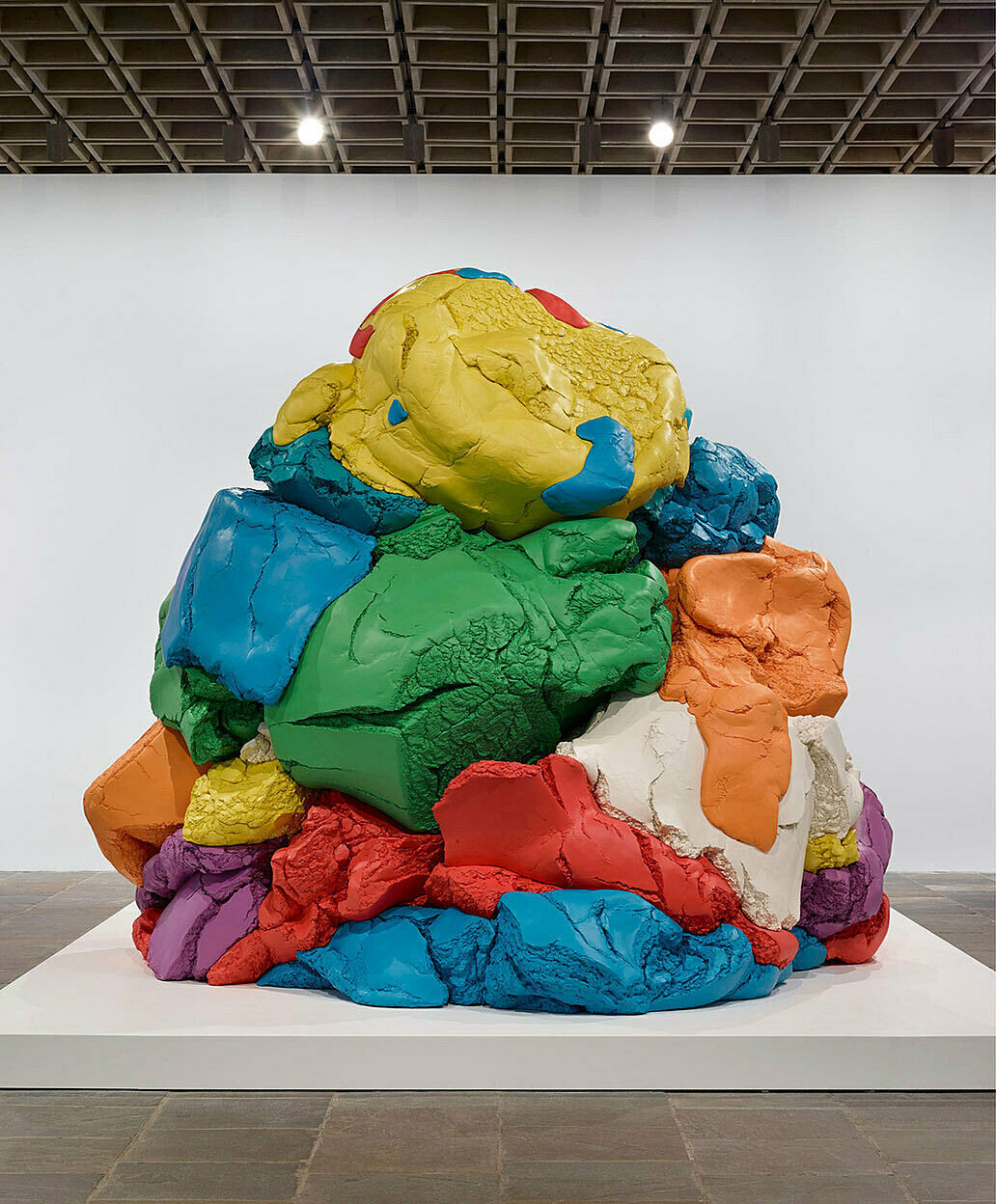Jeff Koons: A Retrospective | Art & Artists
June 27–Oct 19, 2014
Jeff Koons: A Retrospective | Art & Artists
Celebration
8
Koons conceived his series Celebration in 1994 as a paean to the milestones that mark a year and the cycle of life. Fittingly, it was inspired by an invitation to design a calendar for which he created photographs that referred to holidays and other joyous events. These images formed the basis for large-scale sculptures and paintings that the artist hoped might serve both as archetypal symbols accessible to a broad public and as a personal reminder to his abducted son that the boy was constantly on his father’s mind. Taken as a whole, the sixteen paintings and twenty sculptures of Celebration evoke birth, love, religious observances, and procreation, whether in the form of a cracked egg, a giant heart, the paraphernalia of a birthday party, or the sexually suggestive curves and crevices of a balloon animal.
Play-Doh, 1994–2014
In contrast to the perfect smoothness and largely monochromatic palette of many sculptures in Celebration, this one represents an enormous craggy mound of Play-Doh. The material is one of the first that American children use to make simple artworks, and Koons remembers his son proudly presenting him with a Play–Doh sculpture. Yet here the freedom, confidence, and spontaneity of the boy’s initial gesture ironically prompted one of the most complex sculptures Koons has ever made, requiring two decades to fabricate. The sculpture was first conceived in polyethylene but was ultimately fashioned from twenty-seven individual interlocking pieces of painted aluminum, unveiled for the first time in this retrospective. The mountain of Play-Doh may call to mind scatological associations or geological forms, but for Koons, it’s also “a very joyous, very pop material.” A perfect replica of an offhand creation, Play-Doh plays with the distinction between abstraction and representation, while serving as a monument to childlike imagination.

